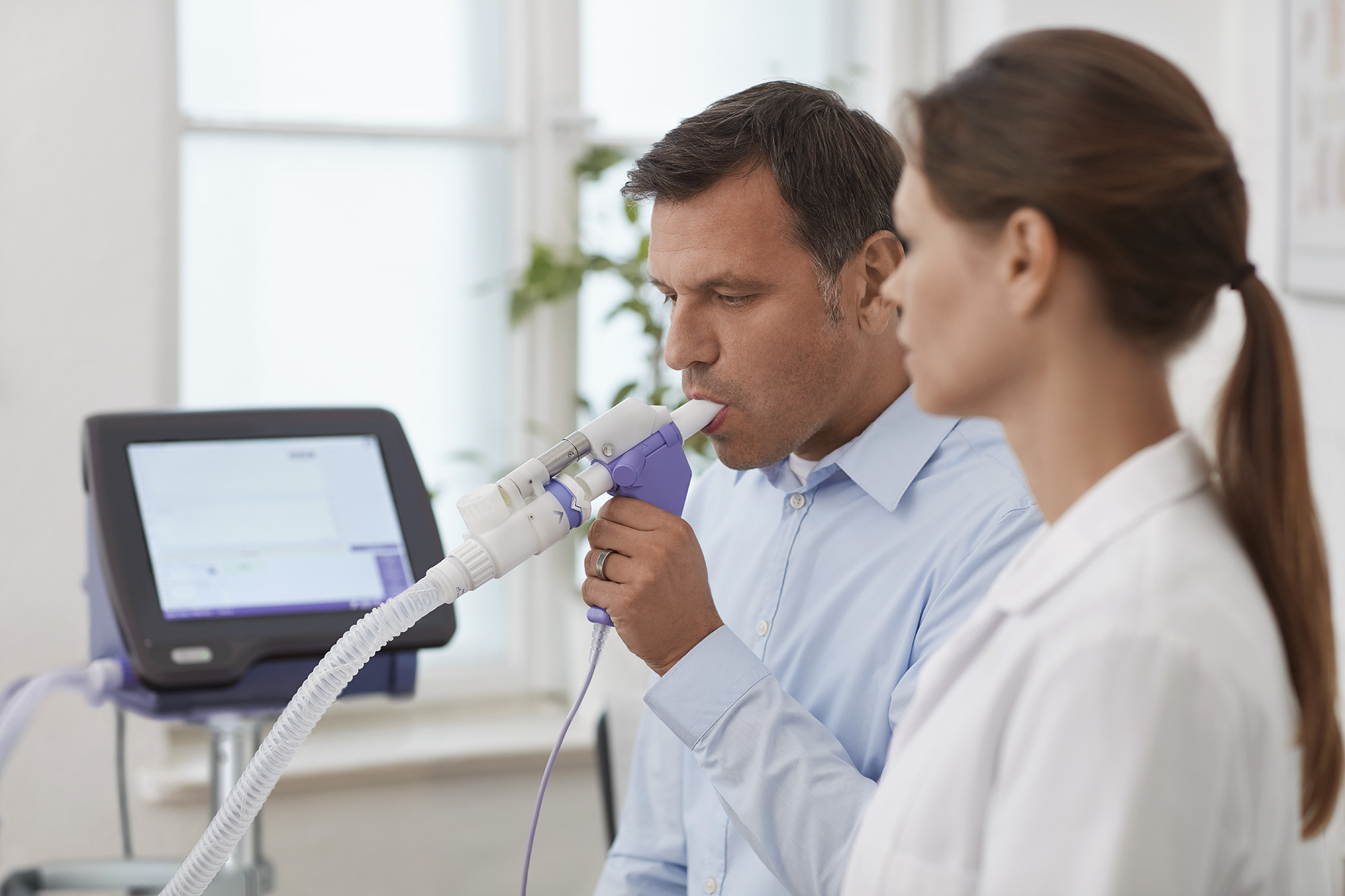Pulmonary Function Testing (PFT)
A test used by all Respiratory and Sleep Specialists to assess the integrated mechanical function of the lung, chest wall, and respiratory muscles, as well as the diffusion of oxygen across the respiratory membrane.
Why you might need a pulmonary function test
The initial pulmonary function test is invaluable when it comes to the specialist understanding any underlying breathing or ventilatory disorders. This is done by measuring the movement of air through a mouthpiece during maximal inhalation and exhalation (Spirometry). The calibrated pulmonary function machine will measure the total volume of air during maximal expiration called the forced vital capacity (FVC) and the volume of air expelled in the first second (FEV1) amongst several other values.
The second component of a PFT is Diffusing Capacity for Carbon Monoxide (DLCO). DLCO is measurement of the ability of the lungs to transfer gas from inhaled air to the red blood cells in pulmonary capillaries.
What to expect
A PFT usually takes up to 30 minutes to complete and can require you to blow into a mouthpiece approximately 8 times in total. You will be seated upright in a comfortable position, the technician will explain the procedure in total and will also give you verbal and/or visual cues during the test so you won’t have to remember the whole procedure start to finish.
A nose clip will be placed on your nose and you’ll be instructed to start the breathing manoeuvre . Three successful trials are required for repeatability. You may also be required to perform the same test following inhaling a bronchodilator such as Ventolin or Bricanyl, allowing the specialist to determine whether there is any upper airway obstruction.
After the initial spirometry the technician will explain the procedure of the DLCO and this will be conducted in a similar way to Spirometry.
Following the PFT test your specialist physician will explain the results to you in detail.

